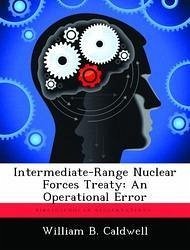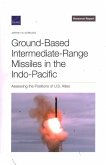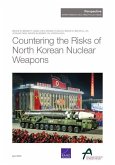The purpose of this paper is to examine the operational impact of the INF treaty and what it means for the future of NATO. At this writing, there is considerable debate going on as to whether or not the US Congress should ratify the INF treaty. The political issues are well known and under careful examination. A critical element which still needs to be addressed is the operational impact of the INF treaty. This area may have been neglected because nuclear weapons are viewed primarily as an element of deterrence. Therefore, their warfighting potential is given only minimal consideration. This paper begins with a discussion of the historical use of nuclear weapons in NATO's defensive Alliance. It follows through to the decision in 1979 to modernize NATO's nuclear force. This decision resulted in the deployment of the Pershing II and ground launched cruise missile (GLCM) systems in Europe. The Soviet warfighting concept for Europe is addressed next to place the intermediate-range nuclear forces in their proper perspective. This is followed by a discussion on the operational implications of the INF treaty. The paper concludes by briefly mentioning a few of the 'defensive' proposals for the post-INF period. This paper concludes that the INF treaty is not the panacea of arms control/reduction which so many want it to be. The treaty is, in fact, an operational error. We will find there is not a viable system or defensive posture which can replace the warfighting capabilities provided by the intermediate-range nuclear forces. When the decision was made in 1979 to modernize our nuclear forces there was an operational imperative for the Intermediate-range nuclear forces. We need to understand this and insure that we take appropriate measures to fill the gap in the continuum of response. For the NATO strategy of flexible response to be credible, it is essential to preserve adequate forces in the three mutually supporting legs of the NATO triad: conventional, theater nuclear a This work has been selected by scholars as being culturally important, and is part of the knowledge base of civilization as we know it. This work was reproduced from the original artifact, and remains as true to the original work as possible. Therefore, you will see the original copyright references, library stamps (as most of these works have been housed in our most important libraries around the world), and other notations in the work. This work is in the public domain in the United States of America, and possibly other nations. Within the United States, you may freely copy and distribute this work, as no entity (individual or corporate) has a copyright on the body of the work. As a reproduction of a historical artifact, this work may contain missing or blurred pages, poor pictures, errant marks, etc. Scholars believe, and we concur, that this work is important enough to be preserved, reproduced, and made generally available to the public. We appreciate your support of the preservation process, and thank you for being an important part of keeping this knowledge alive and relevant.
Bitte wählen Sie Ihr Anliegen aus.
Rechnungen
Retourenschein anfordern
Bestellstatus
Storno








